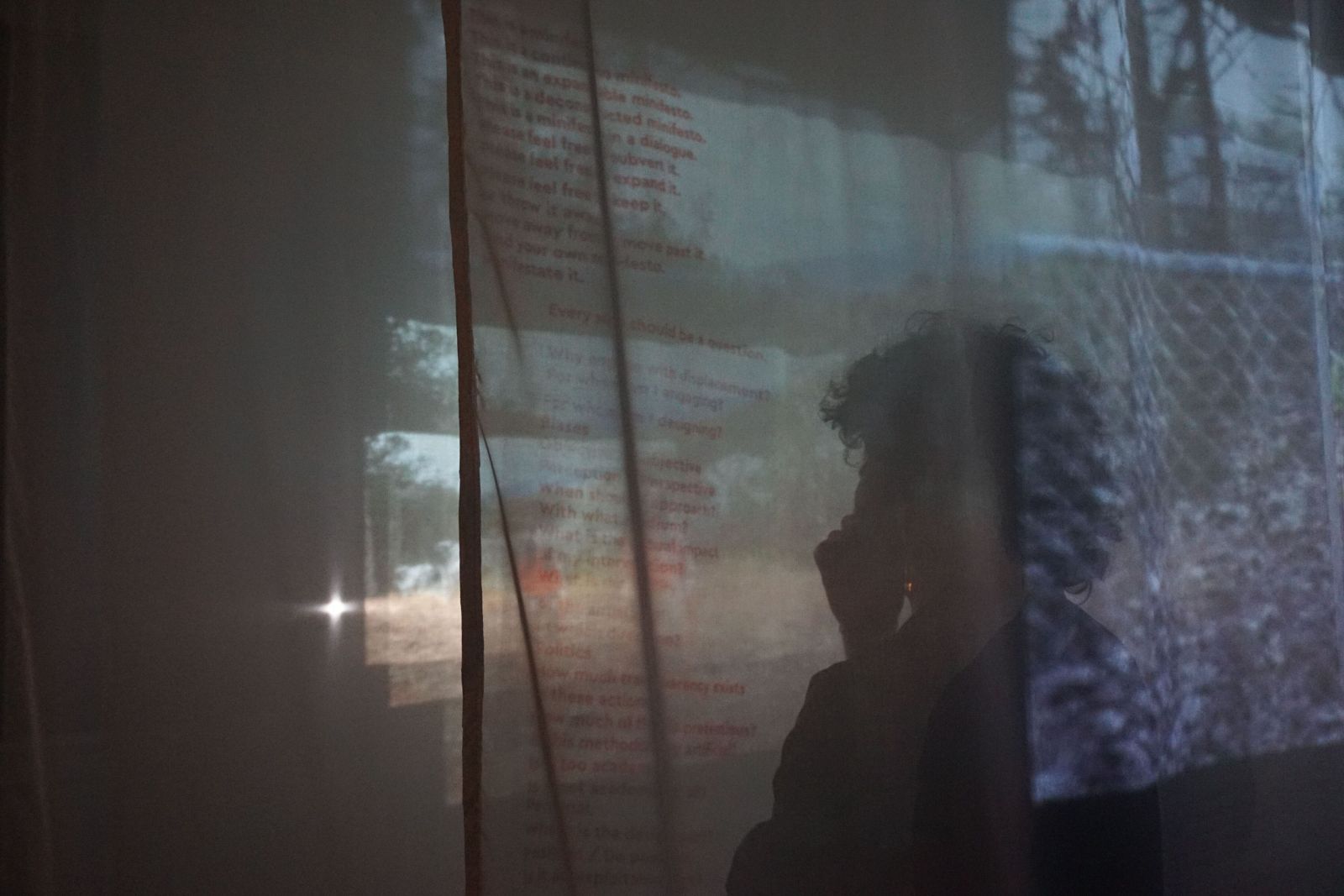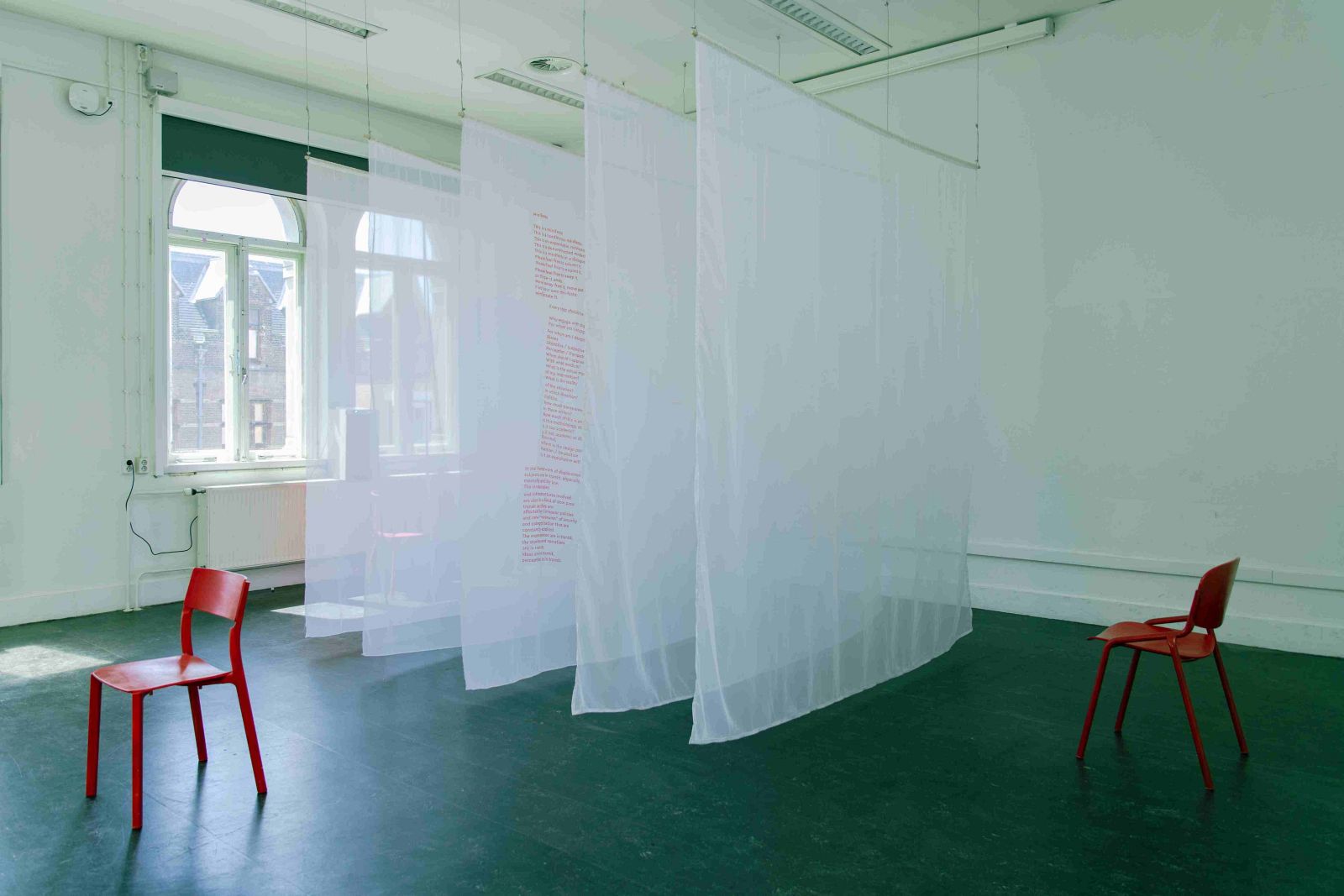
Georgia Gavriiloglou
Keywords: Storytelling, Exploration and observation
Fragile Solutions is a multimedia spatial installation that weaves together and exposes the relations we choose to have – or not have – with the ongoing migration crisis. Focusing specifically on the existence of detention facilities, the work consists of videos filmed in two distinct yet analogous locations, one in Paranesti, Greece and one in Zeist, Netherlands. The videos are projected on textile panels suspended from the ceiling, with the images transferred from one panel to the next, merging on a central panel where a "minifesto” is inscribed. Within the space, three red chairs are correspondingly placed, allowing the viewers to physically position themselves.
While I was growing up, the memory of another homeland was imprinted on me, since I originate from a family that a century ago was forcefully displaced from Cappadocia, Turkey to Greece. Paradoxically, later on in 2012, I became a ‘co-inhabitant’ of a location where people from another land were detained. Reflecting on my personal experience of being in close proximity to a detention center, the project is an auto-ethnographic research stimulated by the necessity to associate with, and re-define, what these sites of restriction mean, reflect, and perform. The struggle to associate with the location and subsequently with the topic of migration led me to develop a performative methodology of approaching and engaging with these sites, involving the simple yet profound act of physically and somatically facing the context. In this work, design does not refer to the creation of a direct material response, but is instead embodied through a methodological engagement with context.
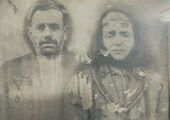
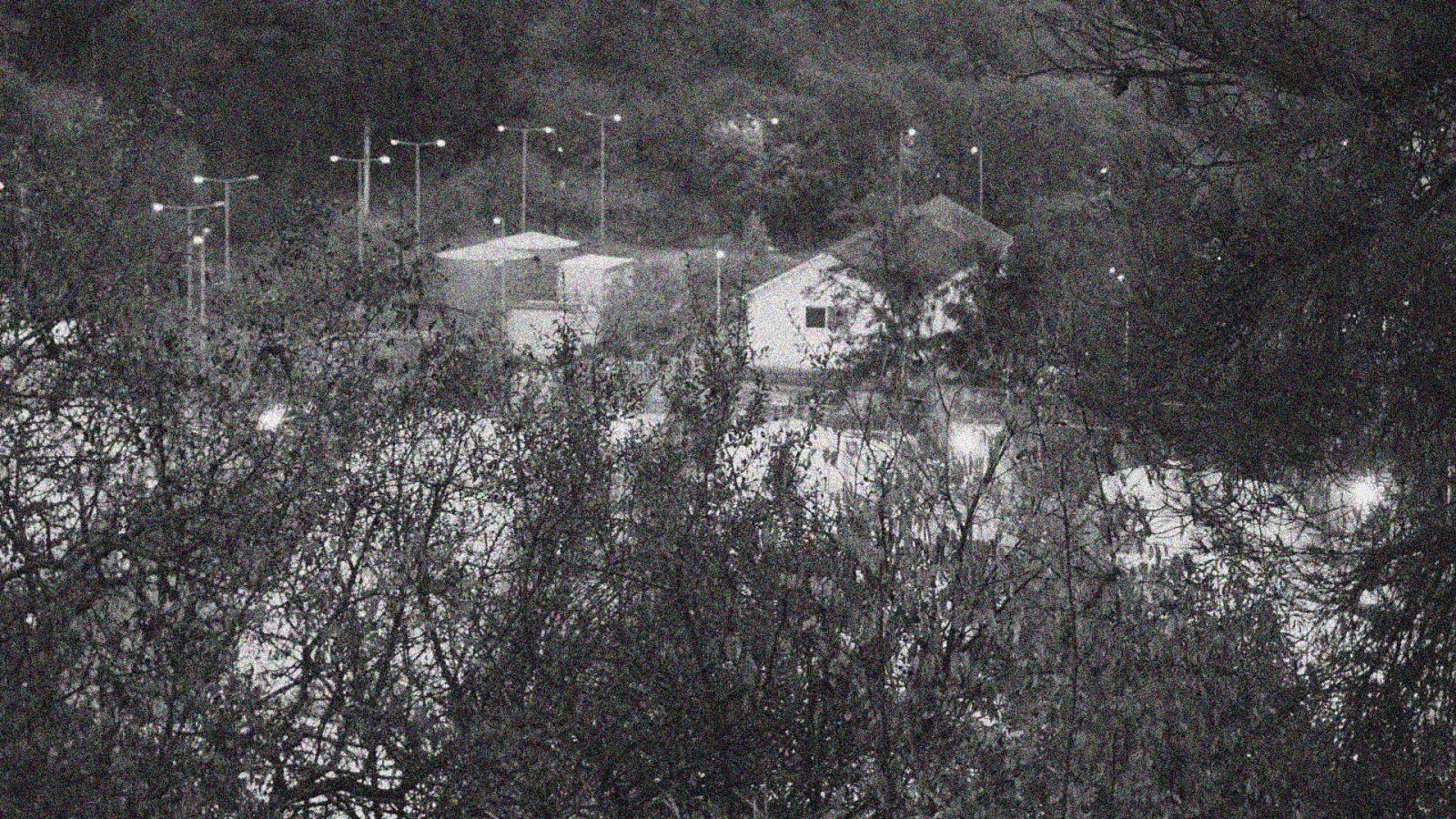
There is a strong idea that design can contribute to multilayered societal and geo-political situations in an immediate way. However, political involvement through design does not necessarily translate to impactful aid; rather, it may result in design being employed to uphold the specific policies and conditions it aims to transform. As a speculative response, through this research I developed a framework, which re-evaluates the capacity of design to solve problems across diverse fields, embracing discomfort through embodiment. By transferring the field research to the Netherlands, I engaged with a local group of citizens who are collectively addressing the same issues, drawing a line across geographies and emphasizing the globality of how displacement is administered.
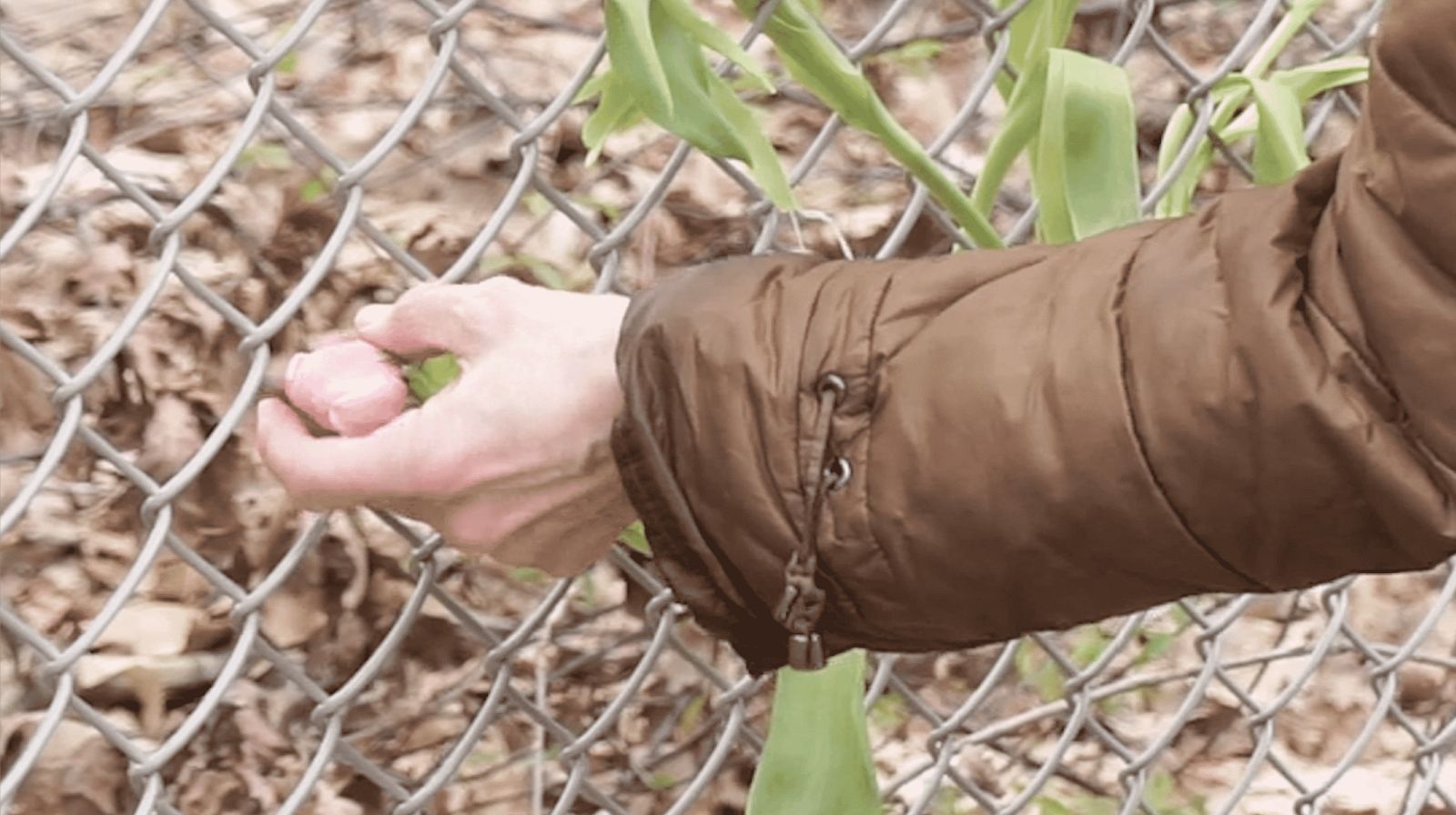
The aim of the project is to transmute our engagement with and our perception of people who seek asylum and the places they are forced to reside, both as creatives and as people. It is a continuous attempt to re-narrate the paradox of how we familiarize ourselves with such places of restriction, how we encourage ‘fragile solutions’ that have a contradictory impact, and how we could re-imagine our urge to contribute through designing. It also critically approaches the role of the designer as a solution driven detached expert, examining how much space exists to tamper with this professionalism by situating the designer in a social and historical context that unavoidably influences their own position and acts.
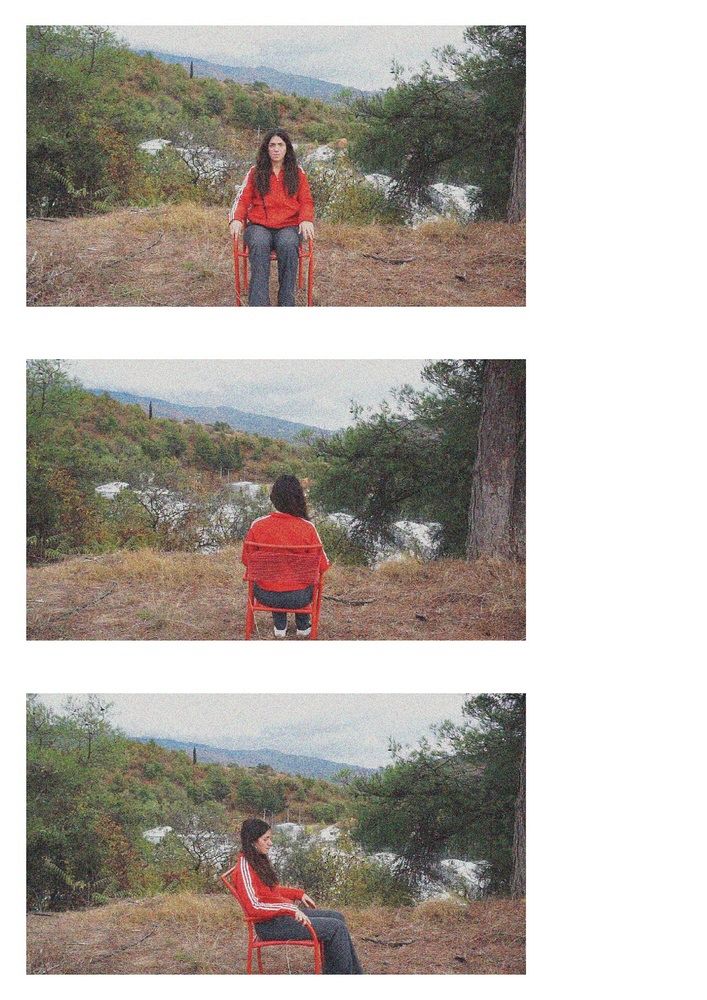
While studying at the Master Industrial Design (MID) my perception of design has shifted significantly. I learned to unlearn, to question and reflect, as well as to construct my practice in such a way that it can be ever evolving. I found a space to question my understanding of the world, how knowledge is produced and why, and how design can impact societal structures and challenge dominant narratives, and then to translate this understanding into if not impactful then at least triggering outcomes. I would like to further develop this space, reconfigure what it could include or not, and to find out which stories I can amplify through it.
